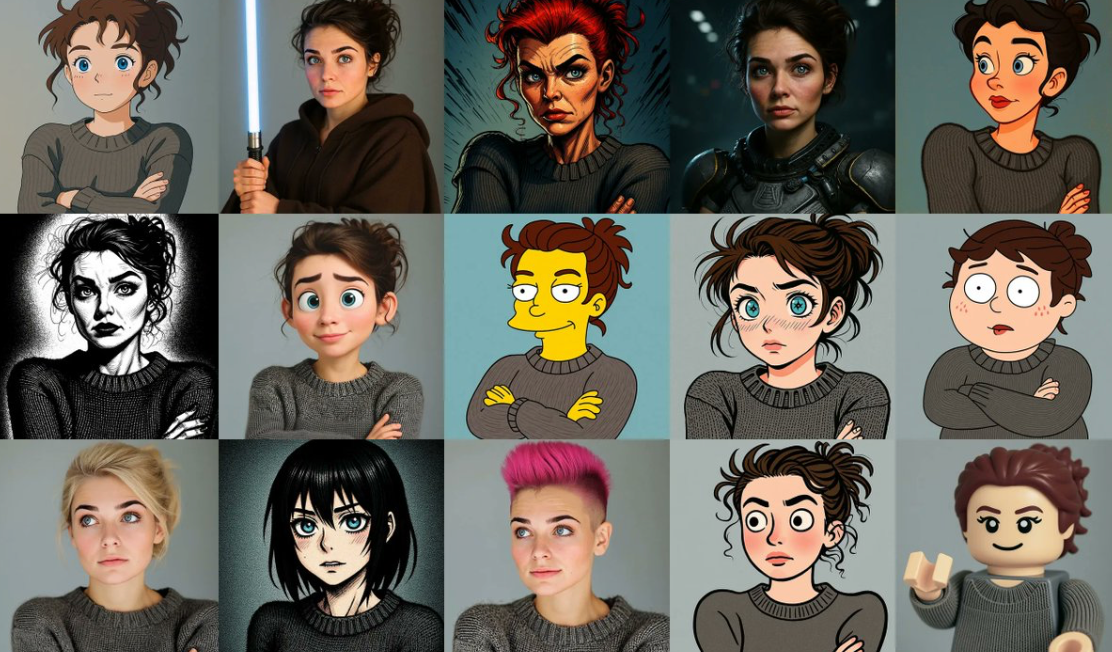The convergence of large language models (LLMs) and generative image systems is reshaping the field of AI creativity. While diffusion models and GANs have dominated image synthesis for years, a new wave of LLM-driven methods—like FLUX Kontext—demonstrates how advanced language reasoning can directly fuel high-quality visual generation.
This article breaks down the techniques behind LLM-based image generation, highlights the innovations in FLUX Kontext, and provides technical examples to illustrate how this new paradigm works.
Why LLMs Are Transforming Image Generation
Unlike traditional diffusion or adversarial networks, LLM-based approaches add three critical capabilities:
- Deeper Semantic UnderstandingLLMs excel at parsing complex, multi-layered instructions (e.g., “a futuristic city skyline rendered in the style of a medieval oil painting”).
- Unified Text-Image RepresentationMultimodal transformers create a shared latent space where words and images align naturally, improving consistency between intent and output.
- Adaptive Prompt InterpretationLLMs can refine and expand ambiguous prompts internally, ensuring the generated images stay faithful to user expectations.
Inside the FLUX Kontext Model
FLUX Kontext exemplifies this next-generation approach. Rather than treating text as a static conditioning input, it merges linguistic reasoning with visual token generation. Key innovations include:
- Multimodal Transformers: Text and image embeddings are processed in shared attention layers, enabling fluid cross-modal alignment.
- Hierarchical Context Windows: Prompts can include narrative elements, object relations, or even cause-effect logic without breaking coherence.
- Semantic Refinement Loops: Instead of linear noise reduction, FLUX Kontext iteratively refines latent images with contextual feedback from the LLM itself.
Core Techniques in LLM-Based Image Generation
1. Semantic Graph Tokenization
Prompts are decomposed into entities, attributes, and relationships.
Example:
"A red fox sitting under a cherry blossom tree at sunset."Becomes:
- Object: fox (red, animal)
- Setting: cherry blossom tree
- Lighting: sunset
This structured breakdown helps the model anchor specific details in the final image.
2. Latent Alignment with Kontext Fusion
FLUX Kontext introduces a Kontext Fusion Layer (KFL) that tightly couples fine-grained text semantics (e.g., “fur texture”) with localized patches in the latent visual space.
3. Iterative Refinement Cycle
Instead of a strict denoising pipeline, the model uses feedback-driven refinement:
latent = init_latent(noise)
for step in range(num_steps):
context = LLM_refine(prompt, latent)
latent = refine_with_context(latent, context)
image = decode(latent)This process ensures both global scene structure and local details stay synchronized.
4. Attention-Guided Rendering
Cross-modal attention directs attributes to the correct regions:
- “red fox” → subject bounding box
- “sunset glow” → global illumination
- “cherry blossoms” → distributed canopy detail
This yields greater visual coherence and prompt fidelity.
Practical Example with FLUX Kontext
Here’s a simplified workflow to illustrate usage:
from flux_kontext import FluxModel, FluxTokenizer, FluxPipeline
# Load model
model = FluxModel.from_pretrained("flux-kontext-base")
# Encode prompt
tokenizer = FluxTokenizer()
prompt = "Cyberpunk samurai walking through neon-lit Tokyo streets, cinematic lighting"
tokens = tokenizer.encode(prompt)
# Generate image
pipeline = FluxPipeline(model)
image = pipeline.generate(tokens, steps=30, guidance_scale=7.5)
image.save("cyberpunk_samurai.png")Parameters like steps (refinement cycles) and guidance_scale (semantic adherence) control output fidelity and creativity.
SEO Keywords for Optimization
- LLM-powered image generation
- FLUX Kontext model
- multimodal transformers for AI art
- semantic tokenization in image synthesis
- cross-attention in generative models
- AI-driven creative workflows
Final Thoughts
LLM-driven models such as FLUX Kontext are not just extensions of diffusion—they’re a fundamental rethinking of image generation. By combining semantic reasoning with visual synthesis, these systems create outputs that are both aesthetically rich and contextually precise.
As multimodal AI matures, the boundary between text and image will continue to fade, allowing language to function as the most powerful creative tool of all.
